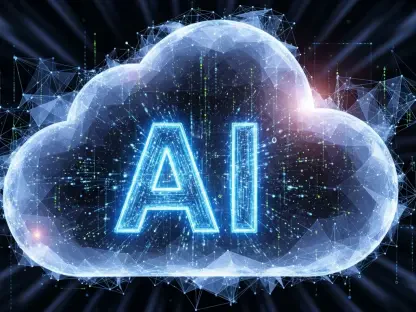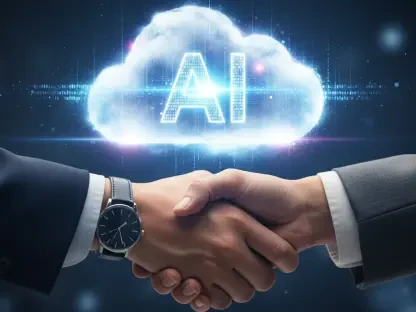Allow me to introduce Anand Naidu, a seasoned development expert with a wealth of knowledge in both frontend and backend technologies. With a deep understanding of various coding languages, Anand brings a unique perspective to the rapidly evolving world of AI-native databases and the agentic era. In this engaging conversation, we explore the transformation of databases into active reasoning engines, the pivotal role of autonomous agents in modern business, the importance of trust and control in AI systems, and the architectural innovations that are shaping the future of enterprise technology. Join us as we dive into these fascinating topics and uncover the insights that are driving the next generation of intelligent systems.
Can you walk us through what the ‘agentic era’ means and why it represents such a significant shift for businesses today?
Absolutely, Megan. The agentic era refers to a time where autonomous agents—systems that can perceive, reason, act, and learn on their own—are becoming central to how businesses operate. Unlike traditional systems that simply follow predefined rules or workflows, these agents exhibit intelligent, emergent behavior. They’re not just tools; they’re decision-makers. This shift is huge because it moves us away from human-initiated transactions to a world where systems can independently drive operations. It’s a game-changer for efficiency and innovation, but it also demands a rethinking of trust, control, and oversight in business environments.
How do these autonomous agents differ from the conventional systems that companies have depended on for so long?
Traditional systems are essentially reactive—they execute commands based on human input or hardcoded logic. Think of them as calculators; they do exactly what you tell them to do. Autonomous agents, on the other hand, are proactive. They can sense their environment, analyze data, make decisions, and even learn from their actions. It’s like the difference between a basic thermostat and a smart home system that anticipates your needs based on patterns. This leap from passive execution to active reasoning is what sets agents apart and enables them to handle complex, dynamic tasks without constant human intervention.
What are some of the key challenges that autonomous systems introduce to business operations?
One major challenge is ensuring trust and accountability. When a system makes decisions on its own, how do you know it’s acting in the company’s best interest? There’s a risk of unintended consequences or biases creeping into decision-making. Another hurdle is integration—many businesses still rely on legacy systems that weren’t built for this level of autonomy, so aligning old infrastructure with new agentic capabilities can be tough. Lastly, there’s the issue of control. Leaders need mechanisms to oversee and, if necessary, override agent actions without stifling their potential. It’s a delicate balance.
The idea of a database evolving from a passive ledger to an active reasoning engine is intriguing. Can you explain what that looks like in practical terms?
Sure. Historically, databases have been like filing cabinets—static repositories where data is stored and retrieved as needed. As a reasoning engine, the database becomes an active participant in decision-making. It’s not just holding data; it’s analyzing it, providing context, and even suggesting actions. Practically, this means a database could flag anomalies in real-time, like unusual financial transactions, and propose next steps based on patterns it’s learned. It’s embedded with intelligence to guide autonomous agents, making it a core part of the thought process rather than just a record-keeper.
Can you share an example of how this active role of a database impacts everyday business decisions?
Imagine a retail company managing inventory during a holiday rush. A traditional database would simply log stock levels and sales. An AI-native database, acting as a reasoning engine, could analyze sales trends, predict shortages before they happen, and recommend restocking specific items at certain locations. It might even coordinate with an autonomous agent to place orders with suppliers automatically. This kind of proactive insight directly influences daily decisions, saving time and reducing the risk of lost sales due to stockouts.
Why is trust and control so critical when working with autonomous agents, and how does an AI-native database support that?
Trust and control are paramount because autonomous agents operate at a speed and scale that humans can’t always monitor in real-time. If an agent makes a bad call—like misallocating resources or misinterpreting customer needs—it could cost millions or damage a company’s reputation. An AI-native database helps by providing a transparent foundation. It records not just what an agent did, but why it did it through an explainable ‘chain of thought.’ This traceability ensures that every action can be audited, fostering trust and giving leaders the control to step in when needed.
What specific features should an AI-native database have to build trust in the actions of autonomous agents?
First, it needs embedded intelligence to explain decisions—features like Explainable AI that show the logic behind an agent’s actions. Second, it should maintain immutable records, so there’s a tamper-proof history of every decision for audits. Third, it must enforce governance rules in real-time, ensuring agents operate within ethical and legal boundaries. Finally, integration with simulation environments is key, allowing agents to be tested safely before acting in the real world. These features collectively create a system where trust isn’t just assumed—it’s engineered.
The enterprise knowledge graph is described as a major advantage. Can you break down what it is and why it’s so important?
An enterprise knowledge graph is a structured representation of a company’s data as interconnected entities—think of it as a web of relationships between customers, products, transactions, and more. It’s important because it enables sophisticated reasoning. Unlike flat data storage, a knowledge graph lets autonomous agents understand context and connections, like how a customer’s purchase history links to their preferences. This depth of insight drives better decisions and personalized actions, making it a cornerstone for AI-driven operations in the agentic era.
Why is the knowledge graph often called a ‘durable moat’ or competitive edge for businesses?
It’s called a durable moat because a well-built knowledge graph is unique to each company—it’s based on proprietary data that competitors can’t easily replicate. While AI models might become commoditized, the richness and structure of your data, captured in a knowledge graph, become your distinct advantage. It’s a barrier to entry; the deeper and more connected your graph, the smarter your agents can be, giving you an edge in innovation, customer experience, and operational efficiency that others struggle to match.
Let’s dive into the perception phase for agents. Why is real-time data so vital for their effectiveness?
Real-time data is the lifeblood of perception for autonomous agents. Without it, they’re essentially blind to the current state of the business environment. Agents need up-to-the-minute information to make relevant decisions—whether it’s adjusting pricing based on market shifts or responding to a customer query with current inventory status. If the data is outdated, their actions become irrelevant or even harmful. Real-time perception ensures agents are always acting on the most accurate, actionable insights available.
What are the consequences if an agent lacks a clear, current view of the business landscape?
If an agent can’t see the current landscape, it’s like driving with a foggy windshield—you’re bound to crash. For instance, an agent managing supply chain logistics might over-order materials based on stale data, leading to excess inventory and wasted costs. Or it could fail to address a customer issue because it doesn’t know about a recent return or complaint. The result is inefficiency, frustrated customers, and potentially significant financial losses. Clarity in perception is non-negotiable for effective autonomous action.
The concept of HTAP+V is introduced as a groundbreaking architecture. Can you explain what it is and why it’s significant?
HTAP+V stands for Hybrid Transactional/Analytical Processing plus Vector processing. It’s a converged architecture that combines operational data (what’s happening now), analytical data (what happened before), and vector processing (which handles semantic understanding, like interpreting customer intent). This matters because it eliminates the silos that plague legacy systems, giving agents a unified, real-time view of the business. It’s significant because it enables agents to act with both speed and depth—handling transactions, analyzing trends, and understanding nuanced queries all in one seamless framework.
How does vector processing specifically contribute to understanding complex aspects like customer intent?
Vector processing is about translating data into a format that captures meaning, not just raw numbers or text. It represents information as vectors in a multidimensional space, where closeness indicates similarity. For customer intent, this means an agent can recognize that phrases like “where’s my order?” and “delivery issue” express the same underlying concern, even if the words differ. This semantic understanding allows agents to respond more accurately and empathetically, improving customer interactions and driving better outcomes.
Looking ahead, what’s your forecast for the future of AI-native databases and autonomous agents in enterprise settings?
I believe we’re just scratching the surface of what AI-native databases and autonomous agents can achieve. Over the next decade, I foresee these systems becoming the backbone of enterprise operations, handling everything from mundane tasks to complex strategic decisions with minimal human oversight. Databases will grow even more intelligent, embedding deeper reasoning and predictive capabilities directly into their core. We’ll also see tighter integration of governance and ethics by design, ensuring trust scales with autonomy. Ultimately, companies that invest in this technology now will redefine their industries, while those who lag risk becoming obsolete in an increasingly agent-driven world.









